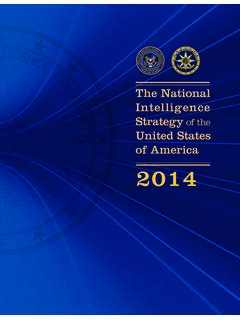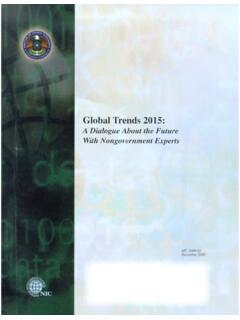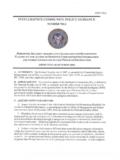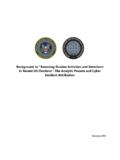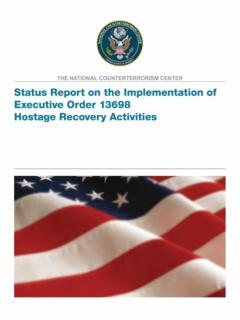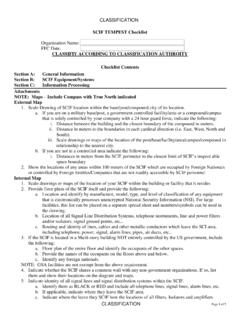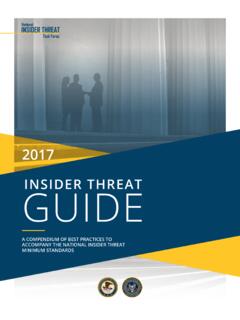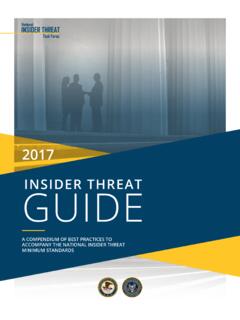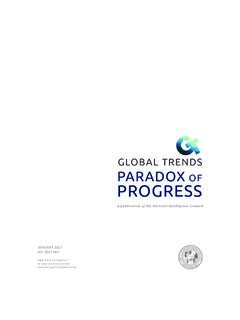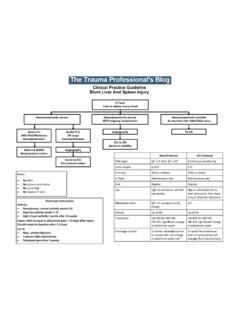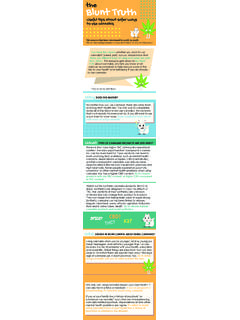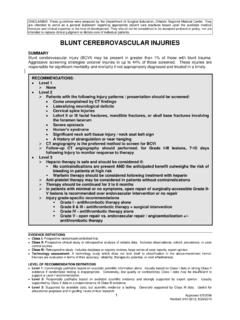Transcription of Worldwide Threat Assessment - DNI
1 Statement for the Record Worldwide Threat Assessment of the US Intelligence Community Senate Armed Services Committee James R. Clapper Director of National Intelligence February 9, 2016 i STATEMENT FOR THE RECORD Worldwide Threat Assessment of the US INTELLIGENCE COMMUNITY February 9, 2016 INTRODUCTION Chairman McCain, Vice Chairman Reed, Members of the Committee, thank you for the invitation to offer the United States Intelligence Community s 2016 Assessment of threats to US national security. My statement reflects the collective insights of the Intelligence Community s extraordinary men and women, whom I am privileged and honored to lead.
2 We in the Intelligence Community are committed every day to provide the nuanced, multidisciplinary intelligence that policymakers, warfighters, and domestic law enforcement personnel need to protect American lives and America s interests anywhere in the world. The order of the topics presented in this statement does not necessarily indicate the relative importance or magnitude of the Threat in the view of the Intelligence Community. Information available as of February 3, 2016 was used in the preparation of this Assessment . ii TABLE OF CONTENTS Page GLOBAL threats Cyber and Technology Terrorism Weapons of Mass Destruction and Proliferation Space and Counterspace Counterintelligence Transnational Organized Crime Economics and Natural Resources Human Security 1 4 6 9 10 11 12 13 REGIONAL threats East Asia China Southeast Asia North Korea Russia and Eurasia Russia Ukraine, Belarus.
3 And Moldova The Caucasus and Central Asia Europe Key Partners The Balkans Turkey Middle East and North Africa Iraq Syria Libya Yemen Iran 16 16 17 17 17 17 19 19 20 20 20 21 21 21 22 23 23 24 iii Lebanon Egypt Tunisia 25 25 25 South Asia Afghanistan Bangladesh Pakistan and India Sub-Saharan Africa Central Africa Somalia South Sudan Sudan Nigeria 26 26 27 27 27 27 28 28 28 28 Latin America and Caribbean Central America Cuba Venezuela Brazil 28 28 29 29 29 1 GLOBAL threats CYBER AND TECHNOLOGY Strategic Outlook The consequences of innovation and increased reliance on information technology in the next few years on both our society s way of life in general and how we in the Intelligence Community specifically perform our mission will probably be far greater in scope and impact than ever.
4 Devices, designed and fielded with minimal security requirements and testing, and an ever-increasing complexity of networks could lead to widespread vulnerabilities in civilian infrastructures and US Government systems. These developments will pose challenges to our cyber defenses and operational tradecraft but also create new opportunities for our own intelligence collectors. Internet of Things (IoT). Smart devices incorporated into the electric grid, vehicles including autonomous vehicles and household appliances are improving efficiency, energy conservation, and convenience.
5 However, security industry analysts have demonstrated that many of these new systems can threaten data privacy, data integrity, or continuity of services. In the future, intelligence services might use the IoT for identification, surveillance, monitoring, location tracking, and targeting for recruitment, or to gain access to networks or user credentials. Artificial Intelligence (AI). AI ranges from Narrow AI systems, which seek to execute specialized tasks, such as speech recognition, to General AI systems perhaps still decades away which aim to replicate many aspects of human cognition.
6 Implications of broader AI deployment include increased vulnerability to cyberattack, difficulty in ascertaining attribution, facilitation of advances in foreign weapon and intelligence systems, the risk of accidents and related liability issues, and unemployment. Although the United States leads AI research globally, foreign state research in AI is growing. The increased reliance on AI for autonomous decisionmaking is creating new vulnerabilities to cyberattacks and influence operations. As we have already seen, false data and unanticipated algorithm behaviors have caused significant fluctuations in the stock market because of the reliance on automated trading of financial instruments.
7 Efficiency and performance benefits can be derived from increased reliance on AI systems in both civilian industries and national security, as well as potential gains to cybersecurity from automated computer network defense. However, AI systems are susceptible to a range of disruptive and deceptive tactics that might be difficult to anticipate or quickly understand. Efforts to mislead or compromise automated systems might create or enable further opportunities to disrupt or damage critical infrastructure or national security networks.
8 Foreign Data Science. This field is becoming increasingly mature. Foreign countries are openly purchasing access to published US research through aggregated publication indices, and they are collecting social media and patent data to develop their own indices. 2 Augmented Reality (AR) and Virtual Reality (VR). AR and VR systems with three-dimensional imagery and audio, user-friendly software, and low price points are already on the market; their adoption will probably accelerate in 2016. AR provides users with additional communications scenarios ( by using virtual avatars) as well as acquisition of new data ( from facial recognition) overlaid onto reality.
9 VR gives users experiences in man-made environments wholly separate from reality. Protecting Information Resources Integrity. Future cyber operations will almost certainly include an increased emphasis on changing or manipulating data to compromise its integrity ( , accuracy and reliability) to affect decisionmaking, reduce trust in systems, or cause adverse physical effects. Broader adoption of IoT devices and AI in settings such as public utilities and health care will only exacerbate these potential effects. Russian cyber actors, who post disinformation on commercial websites, might seek to alter online media as a means to influence public discourse and create confusion.
10 Chinese military doctrine outlines the use of cyber deception operations to conceal intentions, modify stored data, transmit false data, manipulate the flow of information, or influence public sentiments all to induce errors and miscalculation in decisionmaking. Infrastructure. Countries are becoming increasingly aware of both their own weaknesses and the asymmetric offensive opportunities presented by systemic and persistent vulnerabilities in key infrastructure sectors including health care, energy, finance, telecommunications, transportation, and water.
